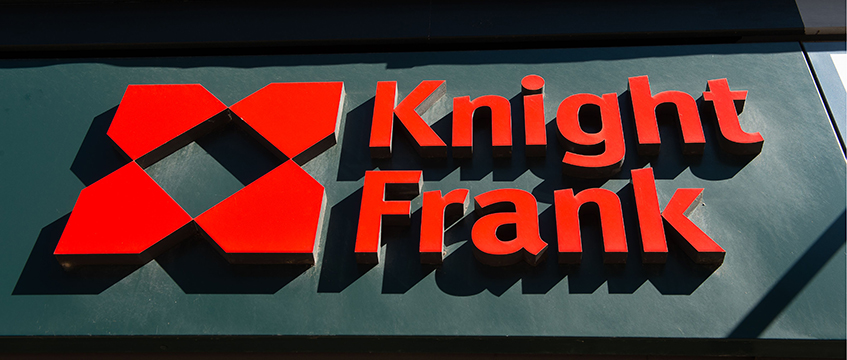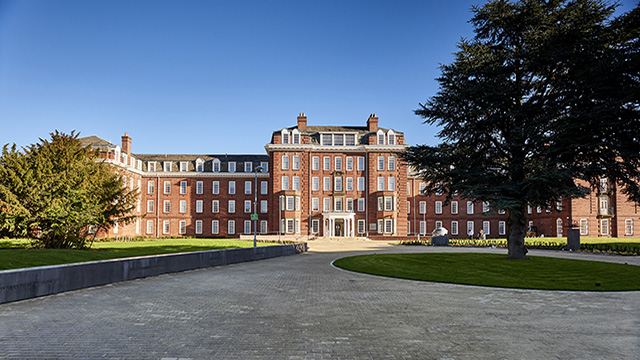As sustainability-linked finance becomes a necessity rather than a novelty, the UK must play catch-up to match the global front-runners. And, as the trend for raising green bonds continues to grow exponentially, is there a danger the bubble might burst? Piers Wehner investigates.
Investment and the environment have become inextricably linked in recent years, with ESG moving from a position at the fringes of finance to now dominate flows.
As the UK hosts the COP26 summit in Glasgow, it will be crowing about taking the lead on this. Last month the Treasury issued a £10bn green gilt, the largest sovereign green bond on record. And it now plans to issue a further £15bn.
In fact, the UK has been rather late to this party. For years it has looked on as Mexico, Egypt, China and Chile led the way. The picture is neatly illustrated by how little green finance is actually issued in UK currency. By 2020 there was a total $1.3tn sloshing around, according to the Corporate Finance Institute. Some 41% of that was in euros, followed by 33% in US dollars. Just 1.85%, a total of $24bn or £17.45bn, was in sterling.
The UK’s plunge into green finance is in line with the market as a whole. This year will see a bumper crop of green issues, in excess of $450bn as opposed to last year’s $300bn, says capital markets analyst Moody’s. Add to that the slightly different “sustainable debt” sales and you have $680bn being issued in the first half of the year alone. According to the Institute of International Finance, that will swell the total market size to well above $3tn.
In the real estate sector, green and sustainability-linked finance, and the raising of green bonds in particular, has become a daily occurrence. What was once a novelty is now becoming a necessity.
Cashing in on the “greenium”
There are good reasons for this. Green finance often comes with a perk – in some cases a “greenium” – reducing the cost for the borrower if certain criteria are met. But more vitally, there is a vast weight of money wanting to invest in anything demonstrably “green”.
“Investors love buying green bonds, because it is one thing they can do,” says the godfather of the green bond, Sean Kidney. The head of the Climate Bond Initiative is in Paris. His distinctive Australian growl is just about cutting through the background clamour, punctuated by the occasional scrape of a fork and chink of a wine glass. “It’s an easy thing for them to do, that helps meet their ESG commitments.”
“Green bonds have increasingly attracted the attention of investors engaged in the decarbonisation of their assets,” notes Timothé Rauly, global CIO and head of FM for real assets at AXA IM. This year it raised its first two green bonds, on behalf of its CoRE Europe fund. Each was a €500m issuance, and each was more than four times oversubscribed. For Rauly this is “indicative of the significant and sustained demand for green finance products on behalf of institutional investors”.
AXA’s experience was hardly unique. SEGRO’s first green bond, issued earlier this year, was for €500m, and it was eight times oversubscribed. Shopping centre and residential owner Atrium European Real Estate raised €350m in April this year with a green hybrid bond, which attracted an order book of €1.2bn. Similarly with Berkeley, Tritax, Workspace… the list goes on.
“Four years ago, we would not be talking about this,” says Ryan Lee, Atrium’s CFO. “We saw a change, I think, in the market, which led us down the route to green finance.”
In other areas of green and sustainability-linked financing the story is similar. Last year, Aviva Investors launched its Sustainable Transition Loans programme for commercial real estate. The idea was to give real estate access to funds to improve specific, less-than-green assets, set against a framework that has been endorsed by the UN. The appetite, both from Aviva’s investors and from borrowers, was “way beyond our expectations”, recalls the firm’s head of real estate debt, Gregor Bamert.
“We made a formal commitment at the end of last year that we would make £1bn of sustainable transition loans by 2025,” he says. The year was chosen because it ties in with Aviva’s other climate commitments, the £1bn figure because “it’s a good, aspirational number”. A bit of back-of-an-envelope calculating led Bamert and his team to believe that, over the five years, 20% of the circa £1bn it loaned each year would be the new STLs.
He was wrong. “In the first year, where we thought we would be well below 20%, we are now at nearly 50%.”
To put that another way, Aviva Investors has lent more in sustainable transition loans this year than it lent in total to real estate last year.
Heading for a bubble?
For some, such as the Bank for International Settlements, this has raised the worrying possibility of a bubble. It argues that the growth in ESG funds is comparable with the dotcom and sub-prime mortgage bubbles that burst earlier this century.
Valuations of the $35tn of ESG assets “may be stretched”, it said in a recent report, and the “greenium could signal market overheating”.
The reality seems rather different. “Bubble schmubble,” was Kidney’s considered verdict. “I have to laugh because it’s just such a 19th-century view. But that view is around. I accept that.”
The fear that these assets are overvalued is a nonsense, says SEGRO CFO Soumen Das. For him, the reason to launch a green bond was simple. “We looked at what we were already doing and realised that it fulfilled all of the requirements.” Raising finance as a green bond was, in effect, a good way of communicating that to investors.
What came as a surprise was the appetite from investors, Das says. “Where there is a big difference is in the volume of capital.”
Atrium’s Lee agrees. But in communicating that fact, Atrium also attracted the attention of some very different investors.
“That change, from a standard issuance to a green bond, diversified the investor base and broadened it significantly,” says Lee. “We have probably seen at least double the number of investors’ names that we have seen previously without the green element.”
A little further digging into the order book proves that these investors were specifically interested in the green aspect. The investors were graded, according to their appetite for ESG-linked investments, on a sliding scale from very dark green to neutral, with a Pantone palette of limes and leafy hues in between. “Over 70% were in the very dark or dark green,” says Lee. “Only a third were in the light green aspect of it.”
By way of comparison, the mix in 2018 was very different. “We probably had no more than a third who were dark green. It has flipped completely over two and a half years.”
Back to the roots
With this increase in investor appetite has come far more scrutiny.
The roots of green finance, with investors linking the financial and the environmental, go back to the 1970s. Green bonds have their origins in 2007, when the European Investment Bank issued what it called a “climate awareness bond”.
Back then the tests to see just how green the outcomes were weren’t exactly sophisticated, says Kidney. “The EIB told the investors: ‘trust us, cross our hearts and hope to die’.” And they only gave the bonds to established green investors.
Not much had changed until recently, says Lee. “Two years ago they would ask ‘is this green?’ and we would say ‘yes’ and that would be it.”
Now there are second opinion providers and in-house experts. “It has come a long way,” says Kidney. “Especially in the last 18-24 months.”
Larger investors are more often than not turning up to one-on-one meetings with green analysts, instead of just a general portfolio manager. And the questions being asked are increasingly forensic.
“Now the questioning has really deepened into all the elements of how the money will be used,” says Lee. He rattles off the typical questions: what are your credentials? What are the KPIs? What is the proof?
This increasingly sophisticated interrogation, as well as the KPIs attached to the loans themselves, leaves little or no room for passing off a duck as a swan.
But far from being unsupportable or artificially inflated, green finance appears to be turning into the norm.
“And that’s exactly what it should be,” says Kidney. “It will take a while before it is the norm, but that is the direction of travel and the intent.”
Kidney says we should expect this within a decade, but many in real estate plan to move faster. “All of our financing will be green from now on,” says SEGRO’s Das. “Because everything we now do meets those criteria. It will only be used towards sustainable and green activities”
Lee agrees. “This will be the future standard for raising capital,” he says. “I don’t think that Atrium would go to market other than with green.”
Indeed, Das says the term may soon become irrelevant. “In five to 10 years’ time, will we have to tag out bonds as green?” he muses. “Because the market will have got there and moved beyond.
“It will be a bit like the differentiation between investment-grade bonds and junk bonds. For ‘good companies’ it is going to be a very short space of time before all of their financing will, in effect, be green.”
Which begs a question: where does that leave anything that can’t meet the criteria, that isn’t “green”?
“From an investor’s point of view, it will be a struggle to allocate capital to companies that are not doing the right thing,” says Das.
Just look at what pension funds are doing with their fossil fuel investments.
“It won’t take 10 years before you can’t find someone to invest in your paper if it’s not right,” says Lee. “If you are not coming to market with very concrete green plans backed up by action, then you will be a heretic. A bit like tobacco. The people willing to invest in you will not be a very broad or deep group.”
And, says Bemert, it will cost you. “The risks will be huge and the market small, so yes, that will be expensive.”
Those that can’t keep up, in other words, will be effectively cut off from debt. “If we hadn’t really made an effort over the past two, three years, that would have been us,” says Lee. “We would have been left behind.”
Das, meanwhile, calculates that SEGRO is likely to issue its next bond in a year to 18 months’ time. He is cagey about how much and exactly when the issue will be, but one thing is certain: it will be green.
To send feedback, e-mail piers.wehner@eg.co.uk or tweet @PiersWehner or @EGPropertyNews











